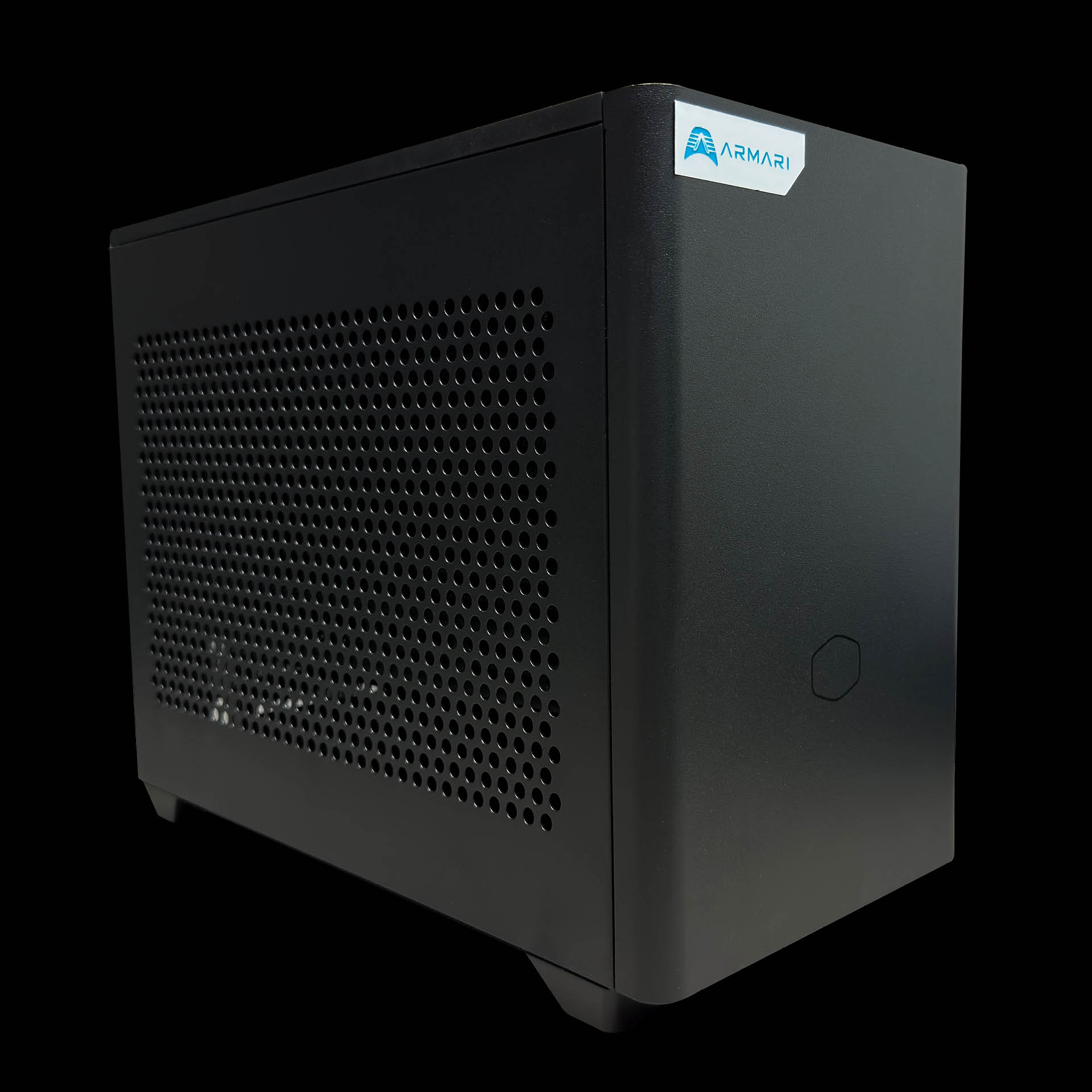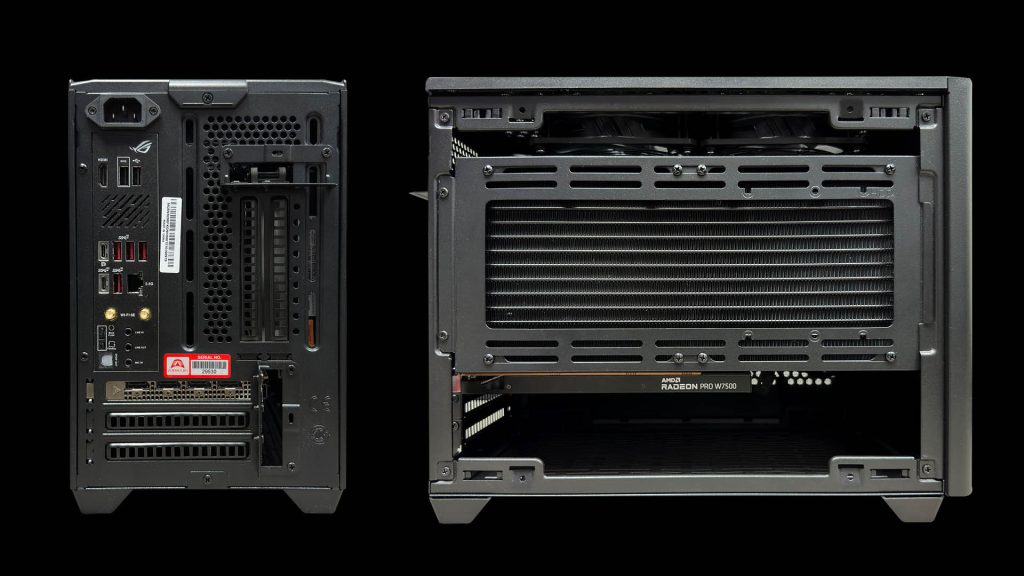This compact desktop workstation, built around the gamer-favourite Ryzen 7 9800X3D processor, is also a near perfect fit for reality modelling, writes Greg Corke
The first AMD Ryzen processor to feature AMD 3D V-Cache technology launched in 2022. Since then, newer versions have become the processors of choice for hardcore gamers. This is largely thanks to the additional cache — a superfast type of memory connected directly to the CPU — which can dramatically boost performance in certain 3D games. As we discovered in our 2023 review of the ‘Zen 4’ AMD Ryzen 9 7950X3D, that applies to some professional workflows too.
With the launch of the ‘Zen 5’ AMD Ryzen 9000 Series, AMD has opted for a staggered release of its X3D variants. The 8-core AMD Ryzen 7 9800X3D was first out the blocks in November 2024. Now the 12-core AMD Ryzen 9 9900X3D and 16-core AMD Ryzen 9 9950X3D have just been announced and should be available soon.
This article is part of AEC Magazine’s 2025 Workstation Special report
UK manufacturer Armari has been a long term advocate of AMD Ryzen processors and has now built a brand-new workstation featuring the AMD Ryzen 9800X3D. With a 120W TDP, rising to 162W under heavy loads, it’s relatively easy to keep cool. This allows Armari to fit the chip into a compact Coolermaster MasterBox NR200P Mini ITX case, which saves valuable desk space. Even though the components are crammed in a little, the 280mm AIO CPU cooler ensures the system runs quiet. While the fans spin up during all-core tasks like rendering in V-Ray, the noise is perfectly acceptable for an office environment.
But this is not a workstation you’d buy for visualisation or in indeed CAD or BIM. For those workflows, the non-X3D AMD Ryzen 9000 Series processors would be a better fit, and are also available as options for this machine. For instance, the 16-core AMD Ryzen 9 9950 has a significantly higher single-core frequency to accelerate CAD, and double the number of cores to cut render times in half.
The X3D chips shine in tasks that benefit from fast access to large amounts of cache. As we detail in this in-depth article, reality modelling is one such workflow. In fact, in many scenarios, Armari’s compact desktop workstation not only outperformed the 16-core AMD Ryzen 9 9950 processor but the 96-core AMD Ryzen Threadripper Pro 7995WX as well.
However, the workstation is not quite the perfect match for mainstream reality modelling. While the AMD Radeon Pro W7500 GPU is great for CAD, it’s incompatible with select workflows in Leica Cyclone 3DR and RealityCapture from Epic Games – those accelerated by Nvidia CUDA. Here, the Nvidia RTX A1000, an equivalent 8 GB GPU, would be the better option.
The test machine came with 96 GB (2 x 48 GB) of Corsair Vengeance DDR5-6000C30 Expo memory, running at 5,600 MT/s. While the system supports up to 192 GB, anything above 96 GB requires the memory speed to be lowered to 3,600 MT/s. This reduction can lead to noticeable performance drops in some memory-intensive reality modelling workflows.
Armari, true to form, is continually looking for ways to improve performance. Just before we finalised this review, the company sent an updated machine with 48 GB (2 x 24 GB) of faster 8,000 MT/s G.Skill Tri Z5 Royal Neo DDR5 memory, paired with the newer Asus AMD ROG Strix B850-I ITX motherboard.
In our tests, this new setup provided a slight (1-2%) performance boost in some reality modelling tasks. However, since our most demanding test requires 60 GB of system memory and 48 GB is the current maximum capacity for this memory speed, it’s hard to fully gauge its potential. For the time-being, the higher speed memory feels like a step toward future improvements, pending the release of larger-capacity kits.
Having more cache probably isn’t the only reason why the 9800X3D processor excels. Because the chip is made from a single CCD, there’s less latency between cores. We delve into this further in this in-depth reality modelling article. It will be fascinating to see how the 12-core and 16-core X3D chips compare.
If we were to look for faults, it would be that the machine’s top panel connections are USB-A only, which is too slow to transfer terabytes of reality capture data quickly, but Armari tells us that production systems will have a front USB-C Gen 2×2 port.
Overall, Armari has done it again with another outstanding workstation. It’s not just powerful — it’s compact and portable as well — which could be a big draw for construction firms that need to process reality data while still on site.

Specifications
- AMD Ryzen 7 9800X3D processor (4.7 GHz, 5.2 GHz boost) (8-cores, 16 threads)
- 96 GB (2 x 48 GB) Corsair Vengeance DDR5-6000C30 EXPO memory (5,600 MT/s)
- 2TB Samsung 990 Pro M.2 NVMe PCIe4.0 SSD
- ASUS ROG Strix AMD B650E-I Gaming Wifi Mini-ITX Motherboard
- AMD Radeon Pro W7500 GPU (8 GB)
- Armari SPXA6815NGR 280mm AIO+NF-P14 redex CPU Cooler
- Coolermaster MasterBox NR200P Mini ITX case (376 x 185 x 292mm)
- Microsoft Windows 11 Pro
- Armari 3 Year basic warranty
- £1,999 (Ex VAT)
- www.armari.com
This article is part of AEC Magazine’s 2025 Workstation Special report
- Features
- AMD Ryzen AI Max Pro: the integrated GPU comes of age
- AMD Ryzen 9000 vs Intel Core Ultra 200S
- Workstations for arch viz
- The AI enigma – challenges for workstations
- Nvidia RTX GPUs for Stable Diffusion
- Z by HP Boost: GPUs on demand
- Workstations for reality modelling
Reviews
- HP ZBook Firefly 14 G11 A mobile workstation
- Lenovo ThinkPad P14s (AMD) mobile workstation
- Scan 3XS GWP-A1-C24 and GWP-A1-R32 desktop workstations
- Boxx Apexx A3 desktop workstation
- Armari Magnetar MM16R9 desktop workstation
- Comino Grando workstation RM
News
- Reshuffle spells end for Dell Precision workstation brand
- Lenovo powers IMSCAD workstation as a service (WaaS)
- Nvidia unveils ‘Blackwell’ RTX GPUs
- HP to launch 18-inch mobile workstation
- Nvidia reveals AI workstation
- HP bets big on AMD Ryzen AI Max PRO processor
- Intel Core Ultra 200HX and 200H processors launch
- AMD Ryzen AI Max PRO ‘Strix Halo’ processor launches






